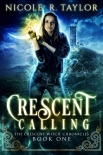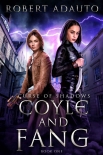Short Fiction Robert E. Howard (dark books to read TXT) 📖

- Author: Robert E. Howard
Book online «Short Fiction Robert E. Howard (dark books to read TXT) 📖». Author Robert E. Howard
There was no such thing, at that time, as a consolidated Nordic empire. As always, the tribes had each its own chief or king, and they fought savagely among themselves. What their destiny might have been will not be known, because another terrific convulsion of the earth, carving out the lands as they are known to moderns, hurled all into chaos again. Great strips of the western coast sank; Vanaheim and western Asgard—uninhabited and glacier-haunted wastes for a hundred years—vanished beneath the waves. The ocean flowed around the mountains of western Cimmeria to form the North Sea; these mountains became the islands later known as England, Scotland and Ireland, and the waves rolled over what had been the Pictish wilderness and the Bossonian marches. In the north the Baltic Sea was formed, cutting Asgard into the peninsulas later known as Norway, Sweden and Denmark, and far to the south the Stygian continent was broken away from the rest of the world, on the line of cleavage formed by the river Nilus in its westward trend. Over Argos, western Koth and the western lands of Shem, washed the blue ocean men later called the Mediterranean. But where land sank elsewhere, a vast expanse west of Stygia rose out of the waves, forming the whole western half of the continent of Africa.
The buckling of the land thrust up great mountain ranges in the central part of the northern continent. Whole Nordic tribes were blotted out, and the rest retreated eastward. The territory about the slowly drying inland sea was not affected, and there, on the western shores, the Nordic tribes began a pastoral existence, living in more or less peace with the Cimmerians, and gradually mixing with them. In the west the remnants of the Picts, reduced by the cataclysm once more to the status of stone-age savages, began, with the incredible virility of their race, once more to possess the land, until, at a later age, they were overthrown by the westward drift of the Cimmerians and Nordics. This was so long after the breaking-up of the continent that only meaningless legends told of former empires.
This drift comes within the reach of modern history and need not be repeated. It resulted from a growing population which thronged the steppes west of the inland sea—which still later, much reduced in size, was known as the Caspian—to such an extent that migration became an economic necessity. The tribes moved southward, northward and westward, into those lands now known as India, Asia Minor and central and western Europe.
They came into these countries as Aryans. But there were variations among these primitive Aryans, some of which are still recognized today, others which have long been forgotten. The blond Achaians, Gauls and Britons, for instance, were descendants of pure-blooded Æsir. The Nemedians of Irish legendry were the Nemedian Æsir. The Danes were descendants of pure-blooded Vanir; the Goths—ancestors of the other Scandinavian and Germanic tribes, including the Anglo-Saxons—were descendants of a mixed race whose elements contained Vanir, Æsir and Cimmerian strains. The Gaels, ancestors of the Irish and Highland Scotch, descended from pure-blooded Cimmerian clans. The Cymric tribes of Britain were a mixed Nordic-Cimmerian race which preceded the purely Nordic Britons into the isles, and thus gave rise to a legend of Gaelic priority. The Cimbri who fought Rome were of the same blood, as well as the Gimmerai of the Assyrians and Grecians, and Gomer of the Hebrews. Other clans of the Cimmerians adventured east of the drying inland sea, and a few centuries later mixed with Hyrkanian blood, returned westward as Scythians. The original ancestors of the Gaels gave their name to modern Crimea.
The ancient Sumerians had no connection with the western race. They were a mixed people, of Hyrkanian and Shemitish bloods, who were not taken with the conquerors in their retreat. Many tribes of Shem escaped that captivity, and from pure-blooded Shemites, or Shemites mixed with Hyborian or Nordic blood, were descended the Arabs, Israelites, and other straighter-featured Semites. The Canaanites, or Alpine Semites, traced their descent from Shemitish ancestors mixed with the Kushites settled among them by their Hyrkanian masters; the Elamites were a typical race of this type. The short, thick-limbed Etruscans, base of the Roman race, were descendants of a people of mixed Stygian, Hyrkanian and Pictish strains, and originally lived in the ancient kingdom of Koth. The Hyrkanians, retreating to the eastern shores of the continent, evolved into the tribes later known as Tatars, Huns, Mongols and Turks.
The origins of other races of the modern world may be similarly traced; in almost every case, older far than they realize, their history stretches back into the mists of the forgotten Hyborian age. …
ColophonShort Fiction
was published between 1925 and 1936 by
Robert E. Howard.
This ebook was produced for
Standard Ebooks
by
Robin Whittleton and Alex Cabal
and is based on transcriptions produced between 2010 and 2013 by
Greg Weeks, Stephen Blundell, Mary Meehan, and The Online Distributed Proofreading Team
for
Project Gutenberg,
on a transcription produced in 2016 by
Richard Scott, Colin Choat, and Roy Glashan
for
Project Gutenberg Australia,
and on digital scans available at the
Internet Archive and SFF Audio.
The cover page is adapted from
Victory,
a painting completed in 1891 by
Ralph Peacock.
The cover and title pages feature the
League Spartan and Sorts Mill Goudy
typefaces created in 2014 and 2009 by
The League of Moveable Type.
The first edition of this ebook was released on
April 13, 2018, 9:40 p.m.
You





Comments (0)